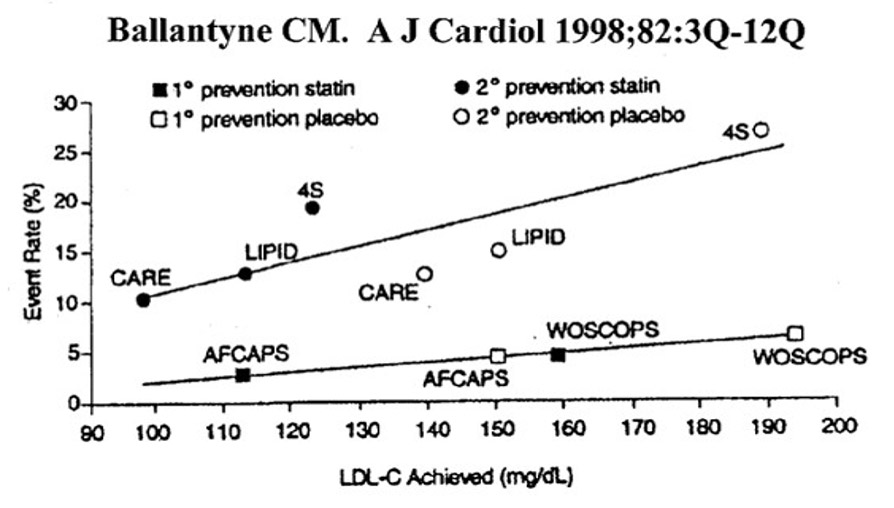
Determining the best statin dose for a patient often appears challenging.
Hitting the ‘sweet spot’, particularly with drugs that affect the brain, can provide enormous relief from symptoms.
It is always be prudent to start a new drug with a low dose, to test safety and tolerability.
It may then be most logical to increase to half-way up the dose response curve (adjusted for body weight), the so called effective dose 50.
The dose can then be titrated, reduced if not tolerated and increased if proven necessary.
Here is the abstract of a paper by Simon B Dimmitt,1,2 Michael C Kennedy,3 Hans G Stampfer,4 Jennifer H Martin2. University of Western Australia1, University of Newcastle2, Sydney Mater3 and Joondalup Hospitals4, WA, NSW, Australia.
You can access more information and subscribe for annual access to our dose response tables here.
Introduction to rethinking statin dose
Coronary events and mortality increase with increasing serum total cholesterol, exponentially above 6.5 mmol/L (LDL-cholesterol 5.0 mmol/L).
The incidence of cardiovascular events continue to fall the lower the cholesterol concentration but below 5.0 mmol/L, total mortality plateaus, then increases (a so called ‘J curve’).
Extrapolation, without clear safety data, appears to be the basis of present recommendations to reduce cholesterol as low as possible.

Methodology
We re-examined the Ballantyne et al analysis of on-statin cardiovascular event rates in published large placebo-controlled randomised statin trials (RCTs) and the apparent correlation with LDL-cholesterol, below 5 mmol/L (Fig 1, above).
We also collated the largest published clinical trials in which coronary patients were randomised to high (up to 40-fold median effective dose, ED50) vs. conventional statin dose (around ED50).
Results
The ‘lines of best fit’ (regression lines in Fig 1, above) appear nearly flat except for the influence of the oldest study (4S, which studied a high risk population at a time when there was limited attention to other cardiovascular risk factors).
A regression line drawn between the placebo groups is the background epidemiology and appears steeper.
Lines drawn within each study between the mean incidence of cardiovascular events in the placebo and in the statin-treated groups have a shallower incline.
We suggest that these observations are related to significant long term statin adverse effects, like renal impairment and diabetes.
Despite small reductions in some CV events, there were no meaningful reductions in total or coronary mortality on the high intensity statin compared to conventional doses in the 6 largest RCTs.
Participants began with a median baseline serum cholesterol of 4.6 mmol/L.
The failure of higher statin doses to improve coronary mortality or overall survival is consistent with the known plateauing of benefit and multiple dose-related toxicities (Fig 2, below).

Conclusion
We suggest that conventional statin doses, simvastatin 10-40 mg (ED50 around 15 mg), or atorvastatin 2-5 mg (ED50 2 mg) can be as effective as higher doses with respect to total mortality, with the benefit of improved safety, tolerability and compliance.